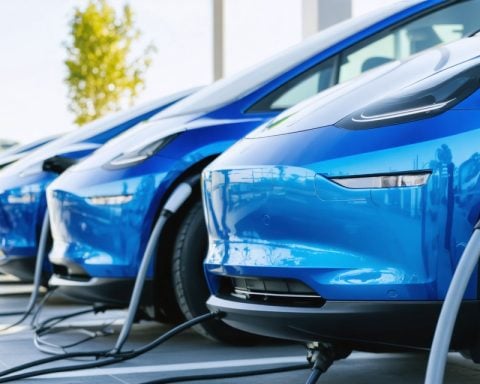BT Abandons Charging Ambitions
In a surprising turn of events, UK telecom giant BT has decided to halt its ambitious plans for electric vehicle (EV) charging stations. Initially, the company aimed to convert up to 60,000 street cabinets for this purpose, inspired by the potential of repurposing the 90,000 green cabinets already adorning UK streets.
Despite the optimism last year, BT’s pilot project, which began in East Lothian, Scotland, has yielded disappointing results. Reports now indicate that this singular charging point will serve as the sole installation, with intentions to dismantle it by February.
A BT representative provided insight into the company’s shift in strategy, explaining that the trials revealed significant challenges in catering to the charging needs of UK EV drivers. The focus has now pivoted towards enhancing Wi-Fi connectivity for EVs, aligning better with BT’s primary strengths.
The company has not publicly detailed the obstacles that derailed its plans. It’s speculated that BT may have underestimated the regulatory hurdles involved in transforming these cabinets into functional charging stations or the challenges of maintaining them amid widespread issues with public charger reliability.
For now, BT appears set to withdraw from the EV charging landscape while the UK continues its ambitious targets. According to the National Audit Office, the nation is still on track to achieve 300,000 charging points by 2030, even without BT’s contributions.
Shifting Gears: The Implications of BT’s Withdrawal from EV Charging
BT’s decision to step back from its ambitious plans for electric vehicle (EV) charging infrastructure carries noteworthy implications for society and the broader global economy. This abrupt change underscores the complexities and uncertainties that companies face when venturing into the rapidly evolving EV market.
The failure of BT’s initiative serves as a cautionary tale about the regulatory landscape surrounding EV infrastructure. With a growing number of companies vying to establish charging networks, the need for clear and supportive government policies becomes ever more critical. Without streamlined regulations, companies may hesitate to invest, potentially slowing the pace of infrastructure development that is key to supporting EV adoption.
Culturally, BT’s withdrawal highlights a larger disparity in technological support for EVs, which could deepen regional inequalities in charging access. As urban areas see blossoming investment in EV infrastructure, rural areas may remain underserved, perpetuating a cycle of reliance on fossil fuels.
Additionally, BT’s pivot towards enhancing Wi-Fi connectivity for EVs reflects a trend that could shape future technologies. As vehicles become smarter and more connected, providing robust digital infrastructure might become as essential as physical charging stations. This shift could foster broader collaborations across sectors, integrating connectivity with sustainable transport solutions while emphasizing the importance of innovation in addressing the climate crisis.
In the long term, BT’s withdrawal may catalyze other players in the tech and energy sectors to rethink their engagement strategies, potentially leading to more sustainable practices and diversified partnerships that extend beyond traditional models of operation. The future of green transport is undeniably interlinked with such innovations, making the lessons from BT’s experience valuable for all stakeholders in the EV ecosystem.
BT Shifts Focus Away from EV Charging: What You Need to Know
Overview of BT’s Abandonment of EV Charging Plans
In a significant strategic change, BT has announced that it will cease its plans to develop electric vehicle (EV) charging stations throughout the UK. Originally, the telecom giant intended to repurpose its street cabinets into a network of up to 60,000 EV charging points. However, after a lackluster pilot project in East Lothian, Scotland, BT has decided to abandon this venture entirely.
Key Challenges Faced by BT
The pilot project, which was intended to serve as a blueprint for future installations, has only resulted in one active charging station, which BT has announced will be dismantled by February. Several factors contributed to this decision:
– Regulatory Hurdles: BT may have miscalculated the complexity of obtaining the necessary approvals and meeting the stringent regulations required for establishing public charging stations.
– Maintenance Issues: The reliability of public EV chargers has been a persistent problem, raising concerns about how BT could manage these facilities.
– Market Demand: The existing infrastructure and competitive landscape may not have aligned with BT’s capabilities to deliver a satisfactory service for EV drivers.
Shift in Strategic Focus
With the withdrawal from the EV charging project, BT is reorienting its resources toward enhancing Wi-Fi connectivity specifically for electric vehicles. This move plays to BT’s strengths in telecommunications rather than infrastructure development, aligning more closely with its core business operations.
Future of EV Charging in the UK
Despite BT’s withdrawal from this sector, the UK’s commitment to expanding its EV charging infrastructure remains robust. According to the National Audit Office, the UK aims to achieve a target of 300,000 charging points by 2030. This ambitious plan is likely to proceed without BT’s involvement, as other companies and government initiatives are pushing forward to meet the increasing demand for electric vehicle infrastructure.
Insights and Predictions
1. Market Trends: As traditional telecom companies like BT reassess their roles in the EV space, specialized firms focused on EV infrastructure may gain a competitive advantage.
2. Innovation Opportunities: The technological integration of telecommunications and smart charging solutions may pave the way for new business models in the EV sector.
3. Regulatory Landscape: The complexities of navigating regulatory frameworks will be critical for any companies looking to enter or expand within the EV charging market.
Conclusion
BT’s decision to step back from the EV charging arena illustrates the challenges faced by companies trying to diversify into new sectors. While this marks the end of one ambitious plan, it does open the floor for other entities to step in and contribute to the UK’s EV infrastructure goals. The landscape will continue to evolve, focusing on innovative and sustainable solutions to meet the needs of electric vehicle drivers.
For more updates on telecommunications and infrastructure, visit BT.













